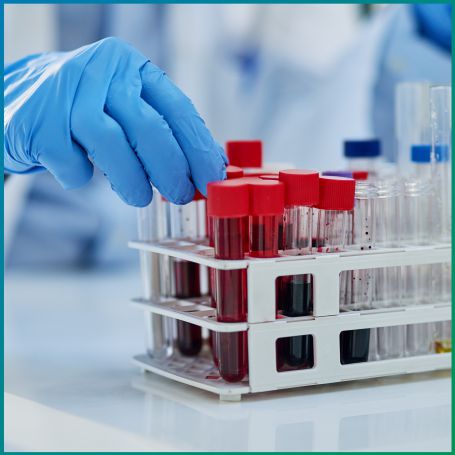
The Tuberculin Test, also known as the Mantoux test, assesses exposure to tuberculosis by injecting a small amount of tuberculin under the skin and measuring the skin's reaction after 48-72 hours.<

The Tuberculin Test, also known as the Mantoux test, is a diagnostic tool used to determine if someone has been exposed to the bacteria that cause tuberculosis (TB). In this test, a small amount of tuberculin purified protein derivative (PPD) is injected just under the skin of the forearm. The injection site is then monitored after 48-72 hours to check for any reaction, which may indicate exposure to TB bacteria.
This test is crucial in identifying latent TB infections, especially in individuals who may have been in contact with someone diagnosed with TB or who are at higher risk due to travel or work in areas with high TB prevalence. Detecting TB early can prevent the spread and allow for timely treatment.
The test is typically recommended for individuals at higher risk of TB exposure, including healthcare workers, people living or working in close quarters with others, those with weakened immune systems, or people who have recently traveled to regions with high TB incidence.
Diagnopein is your go-to option if you are looking for the nearest pathology lab for blood tests and other diagnostic needs, including the Tuberculin Test. Renowned for its excellence as an NABL accredited lab, Diagnopein ensures that every test is conducted with precision, adhering to the highest standards of quality. The lab's state-of-the-art facilities and experienced professionals guarantee accurate reports, giving you the confidence to make informed decisions about your health. Conveniently located in Pune, Diagnopein is dedicated to providing timely and reliable diagnostic services, making it the trusted choice for the Tuberculin Test and other medical evaluations.
1. Induration (TT)
2. Impression (TB)
Yes, the test is generally safe and involves only a small skin injection. Side effects are rare and typically mild.
No, it identifies TB exposure but does not diagnose active TB. Additional tests may be needed if exposure is detected.
After the test, avoid scratching or rubbing the test area and keep it clean and dry until the results are read.
No special preparation is needed. Just ensure you can return to have the test site read within the required timeframe.